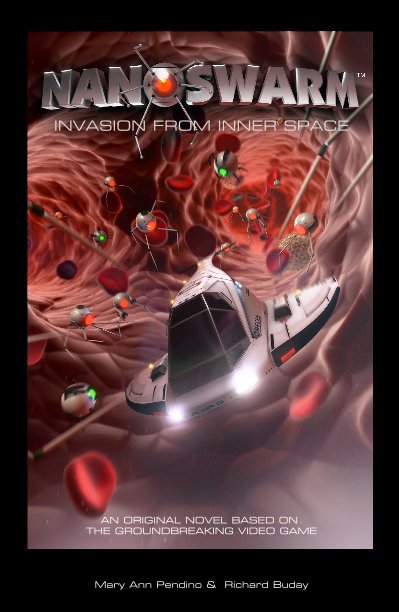Nanoswarm
Invasion From Innerspace
door Mary Ann Pendino & Richard Buday
Dit is de prijs die uw klanten zien Prijslijst bewerken
Over het boek
Life in the year 2030 was almost perfect.
War, crime and hunger were history.
Microscopic robots had eradicated pollution.
Scientists were on the verge of curing disease.
Then, one day, people all over the world started getting sick.
And no one knew why.
That's when you, a twelve-year-old Trainee 2nd Class, joined the world's leading research team.
Based on Nanoswarm, the action-packed video game that takes tweens on a journey of self-discover to save a friend—and themselves, funded by the National Institutes of Diabetes and Digestive and Kidney Diseases of the National Institutes of Health (grant number DK066724).
War, crime and hunger were history.
Microscopic robots had eradicated pollution.
Scientists were on the verge of curing disease.
Then, one day, people all over the world started getting sick.
And no one knew why.
That's when you, a twelve-year-old Trainee 2nd Class, joined the world's leading research team.
Based on Nanoswarm, the action-packed video game that takes tweens on a journey of self-discover to save a friend—and themselves, funded by the National Institutes of Diabetes and Digestive and Kidney Diseases of the National Institutes of Health (grant number DK066724).
Website van auteur
kenmerken / functionaliteiten & details
- Hoofdcategorie: Sciencefiction en fantasie
-
Projectoptie: 13×20 cm
Aantal pagina's: 214 - Datum publiceren: apr 01, 2010
- Taal English
- Trefwoorden video game, sci-fi
Meer...
Over de maker
Archimage, Inc.
Houston, Texas
Richard Buday, FAIA is an architect, writer, educator, and member of the College of Fellows of the American Institute of Architects. He co-founded Buday Wells Architects in 1983, which became Archimage in 1990. The digital arts studio won more than 40 design awards during its 33-year run, from buildings and interiors to short films, broadcast television commercials, illustration and graphics, websites, video games, and other interactive media. Today, Richard is applying lessons learned researching and developing persuasive video games to architecture theory.


